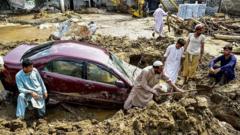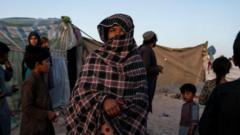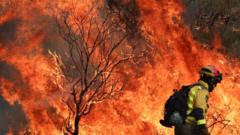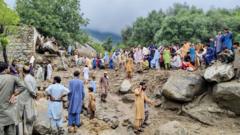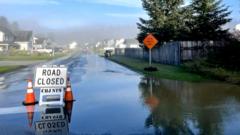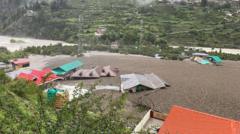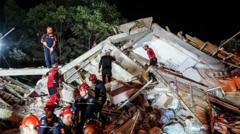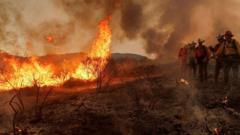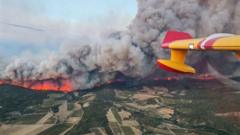Flash floods triggered by heavy monsoon rains have resulted in at least 307 fatalities, predominantly in Khyber Pakhtunkhwa, raising concerns over climate-induced disasters and the region's vulnerability.
Catastrophic Floods Claim Over 300 Lives in Pakistan and Kashmir
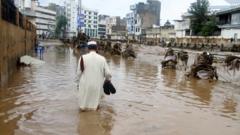
Catastrophic Floods Claim Over 300 Lives in Pakistan and Kashmir
Severe monsoon flooding in Pakistan and Pakistan-administered Kashmir leads to soaring death toll and destruction, with hundreds more affected.
The ongoing monsoon season has unleashed devastating flooding across Pakistan and Pakistan-administered Kashmir, leading to a tragic accumulation of at least 307 confirmed deaths. The majority of casualties have been reported from the mountainous Khyber Pakhtunkhwa province in north-west Pakistan, where disaster relief efforts are hampered by worsening weather conditions.
Among the deceased, nine are from Pakistan-administered Kashmir, and five from the northern region of Gilgit-Baltistan. In Khyber Pakhtunkhwa, at least 74 homes suffered severe damage, and a rescue operation suffered a significant setback when a helicopter crashed due to poor conditions, claiming the lives of its five crew members.
Survivors recount harrowing experiences, with one witness from Buner describing the floods as a "doomsday" event, characterized by an earth-shaking roar as the water surged through the valley. Rescuers have mobilized in response to the calamity, as localities have been declared disaster zones due to the extent of the damage.
The torrential rains are expected to persist until August 21, intensifying fears as communities remain on alert. A day of mourning has been declared in Khyber Pakhtunkhwa, where the grief-stricken populace begins to mourn their lost loved ones.
In the Indian-administered part of Kashmir, emergency responders are engaged in recovering bodies from debris following a flood that recently struck a Himalayan village, resulting in a death toll of at least 60. With monsoon rains contributing significantly to the region's annual precipitation, the impact of climate change is becoming increasingly apparent, prompting scientists to caution against the frequency and intensity of such extreme weather events.
The current situation highlights a critical intersection of climate challenges and humanitarian crises, as Northern Pakistan grapples with glacial melts, leading to unstable landscapes and increased vulnerability to landslides and flash floods. As the nation continues to confront these challenges, further investigation is underway to determine the precise causes behind the recent devastating floods.

